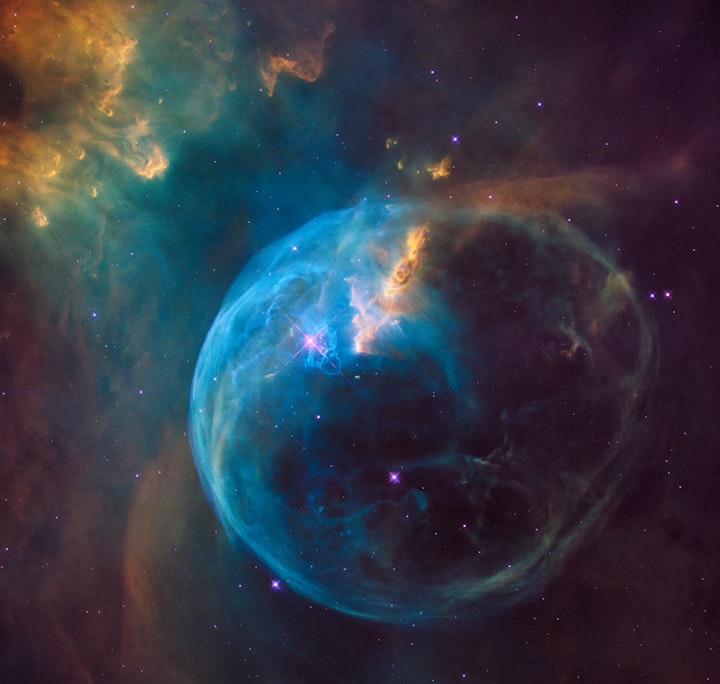MYSTERIES OF THE UNIVERSE
I bet you do not know super earth
In the vast cosmic tapestry of the universe, Earth has long been celebrated as the optimal haven for life. However, scientific exploration has unveiled a realm of possibilities beyond our home planet. While Earth undeniably holds its own greatness, a pantheon of exoplanets beckons, and one such celestial marvel demands our attention – Koi 5715.01.
The contenders for super habitable planets, as curated by scientists, are not readily accessible. They reside in distant corners of the cosmos, far beyond the reaches of our current interstellar capabilities. Claiming the top spot on this list is Koi 5715.01, a world situated a staggering 3,000 light years away from our solar system. What makes this distant celestial body captivating is its potential to meet the fundamental requirements for supporting life.
Koi 5715.01 occupies the Goldilocks zone of its star, a sweet spot where conditions are just right – not too hot and not too cold – for a vital life-sustaining ingredient: liquid water. This planet, if deemed super habitable, would not only adhere to the criteria of mass and size – up to one and a half times that of Earth and 10 percent larger – but also possess an age surpassing five and a half billion years. Such an age would render it approximately one billion years older than our own solar system.
The promise of Koi 5715.01 extends beyond its potential conformity to these criteria. Despite being nearly double the size of Earth, it is speculated to be colder. Yet, hope persists, as the right atmospheric composition, coupled with a robust greenhouse effect, could elevate temperatures to levels conducive to rich biodiversity. The exploration of super habitable worlds is only in its infancy, and Koi 5715.01 serves as a fascinating starting point.
In the pursuit of making this distant celestial body habitable, parallels are drawn to Earthly activities. An analogy emerges, drawing attention to the consumerist tendencies that sustain the corporate world's dominance over smaller businesses. The act of online shopping, particularly on platforms like Amazon or Walmart, inadvertently promotes self-preferencing – a practice where larger corporations prioritize their products over smaller, potentially competitive businesses. The solution, it seems, lies in a collective effort to buy locally, empowering small business owners who contribute significantly to job creation.
Continuing our journey through the cosmos, Kepler 69c emerges as the next contender. Situated approximately 2,700 light years away, this super Earth could boast an impressive age of around seven billion years. Aligning with the estimated age range for super habitable planets – five to eight billion years – Kepler 69c tantalizes scientists with the possibility of harboring complex life. However, its size, nearly four times that of Earth, introduces challenges, such as the potential existence of a colossal continent with vast deserts.
Kepler 1126b, our next cosmic destination, shares a similar name but is located a mere 2,073 light years away. This super Earth resides in a system that has aged seven and a half billion years, orbiting a yellow dwarf star akin to our Sun. Despite being two and a half times closer to its star than Earth is to the Sun, the cooler nature of Kepler 1126b's star ensures a habitable zone at a closer proximity. As the exploration unfolds, the diversity of potential super habitable planets becomes apparent.
Speculos 2C, positioned a relatively manageable 106 light years away, offers a glimmer of hope. Despite its proximity not conferring any advantages, the prospect of a 40 percent larger rocky planet existing in a habitable zone sparks curiosity. However, its red dwarf star, only 15 percent the size of our Sun, introduces challenges. The close proximity of Speculos 2C to its star could lead to tidal locking, resulting in a perpetual day-night divide.
Amidst these cosmic candidates, a yearning for more habitable planets within our solar system arises. This desire opens the door to speculation and curiosity, leaving us to ponder the untold stories and possibilities that might unfold in the ongoing cosmic exploration. As we navigate the depths of space, each celestial body reveals unique characteristics, sparking our imagination and propelling us further into the unknown. The cosmos, with its vast expanse and myriad wonders, remains an infinite playground for exploration and discovery.
About the Creator
Innocent JM
I have lived a life full of mysteries hoping some day i will share them to the world guess its time!!
less explore together wonders yet to come....
Enjoyed the story? Support the Creator.
Subscribe for free to receive all their stories in your feed. You could also pledge your support or give them a one-off tip, letting them know you appreciate their work.







Comments
There are no comments for this story
Be the first to respond and start the conversation.